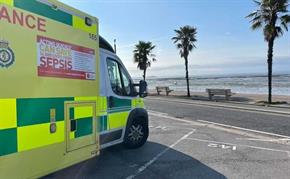Wearing personal protective equipment (PPE) in warm/hot environments increases the risk of heat stress.
The signs of heat exhaustion include:
- a headache
- dizziness
- confusion
- loss of appetite
- feeling sick
- excessive sweating and becoming pale, clammy skin
- cramps in the arms, legs and stomach
- fast breathing or pulse
- temperature of 38°C or above
- being very thirsty.
If someone is showing signs of heat exhaustion, they need to be cooled down.
Points of action
- Assess the risk of overheating in your workplace and consider appropriate control measures to implement.
- Consider collective control measures first (e.g. remove or reduce the sources of heat and improve natural ventilation, where possible by opening windows). Turn off electrical equipment not in use. Turn off/dim lighting to reduce heat.
- Raise awareness with staff and colleagues of the risk of heat stress when wearing PPE and know how to reduce their risk:
Staff working in warm/hot conditions should follow the advice:
- Take regular breaks finding somewhere cool if you can.
- Make sure you are hydrated (checking your urine is an easy way of keeping an eye on your hydration levels – dark or strong-smelling urine is a sign that you should drink more fluids).
- Be aware of the signs and symptoms of heat stress and dehydration.
- Use a buddy system with your team to look out for the signs of heat stress (e.g. confusion, looking pale or clammy, fast breathing) in each other.
- Between shifts, try to stay cool as this will give your body a chance to recover.
- Ensure PPE remains comfortable and may require more frequent changing due to heat, perspiration, and comfort. This should be done when safe to do so and conducted in a safe manner.
- Rotate with colleagues where possible to enable a break from a hot environment and time to remove and/or change PPE if required.
- Ensure that PPE supplies are sufficient to cover a likely increase in demand.
- Adequate ventilation reduces the risk of heat stress for those working in warm/hot conditions. Air exchange is the key to cooling the environment and reducing the risk of airborne infection transmission and this is done through opening windows and doors where possible.
- Any actions taken must be aligned with local infection prevention and control policies
Photo credit: Laura Jordan's picture of Southend on Sea
Friday 8th July 2022
